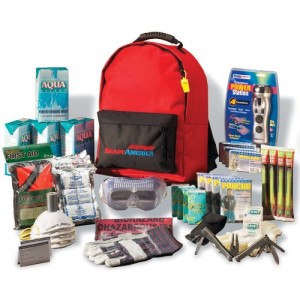 To survive, humans need food and water, shelter from the elements, warmth in extreme temperatures and first aid in the event of injuries. Regardless of whether you have all the long term supplies you’d like to have in the event of a disaster, you should make sure that you have a basic survival kit for the short term if nothing else.
To survive, humans need food and water, shelter from the elements, warmth in extreme temperatures and first aid in the event of injuries. Regardless of whether you have all the long term supplies you’d like to have in the event of a disaster, you should make sure that you have a basic survival kit for the short term if nothing else.
An emergency can crop up on land or (if you’re out in a boat) on the water and you need to make sure you have what you need to be okay for a few days. The contents of the survival kit might vary slightly depending on whether you were on land or water.
Food
A basic survival kit should always have food and water supplies. While you can survive a few days without food, you can’t survive long without water. Food supplies for a basic kit can be MREs (meals ready-to-eat) or something as simple as emergency ration bars.
These are bars that are packed with all of the nutrition you need to survive for several days and can easily be purchased in bulk online.
Water
A basic kit should also have a water supply or water purification tablets so that you can make the water safe to drink. Some people choose to pack water packets that can be kept stored for up to five years.
Signal Tool
Next, you’ll need to make sure that you have some type of signal. Some people use a signal mirror while others rely on a loud whistle to make it easier for them to be found. A whistle can also help to frighten away animals.
Knife
A multi-tool knife is a must-have and can take the place of several other gadgets.
Fire Starting Gear
You’ll need waterproof matches and a fire starter. What many survivalists use to start a fire with are cotton balls because they’re lightweight and easily burn.
Staying Warm
To stay warm and dry, you’ll want your kit to have a poncho (use a large lawn and leaf garbage bag if you don’t have a poncho) and a survival blanket. If you have small children, make sure you have enough survival blankets for them. You also want to have a tube tent.
More Bits And Pieces
Pack a flashlight with an LED light, a sewing kit and a compass in your kit, too. Having a paracord or other emergency cord can come in handy for securing shelter or other uses. You can buy these and wear them as a wristband if you want to.
First Aid
Included in all survival kits should be a portion reserved for the first aid materials. The first aid materials should consist of bandages, tweezers, alcohol wipes, antibiotic ointment, allergy medication and pain reliever at the very least.